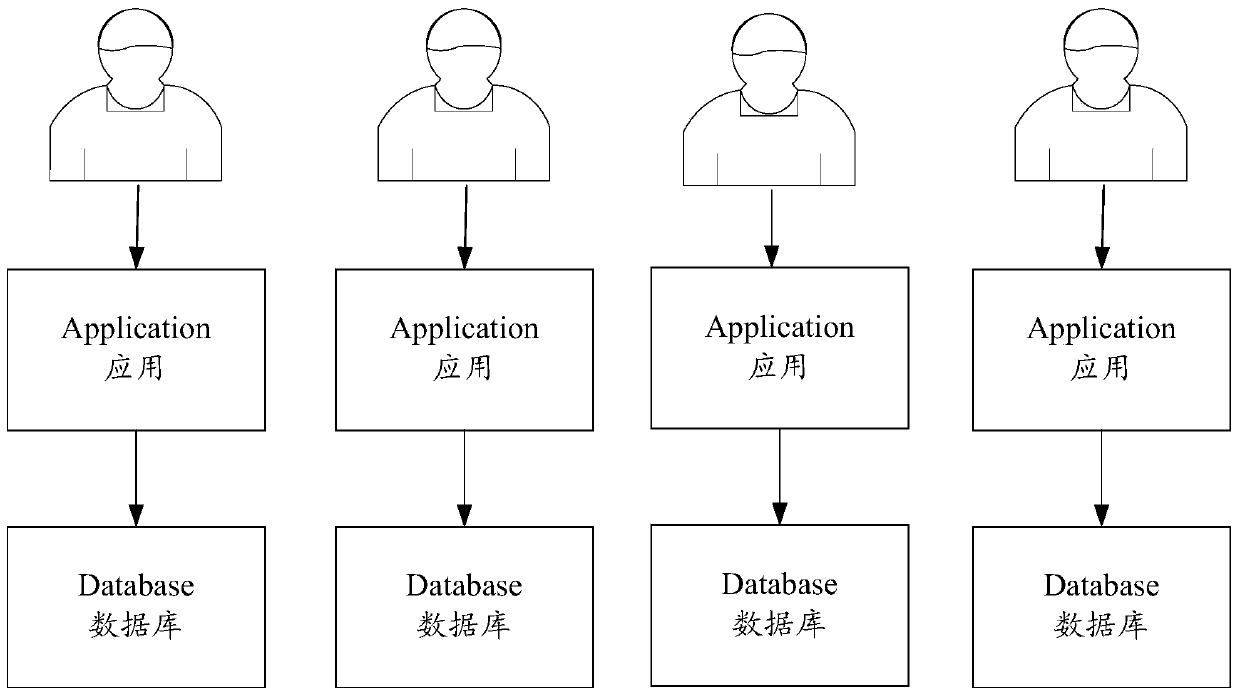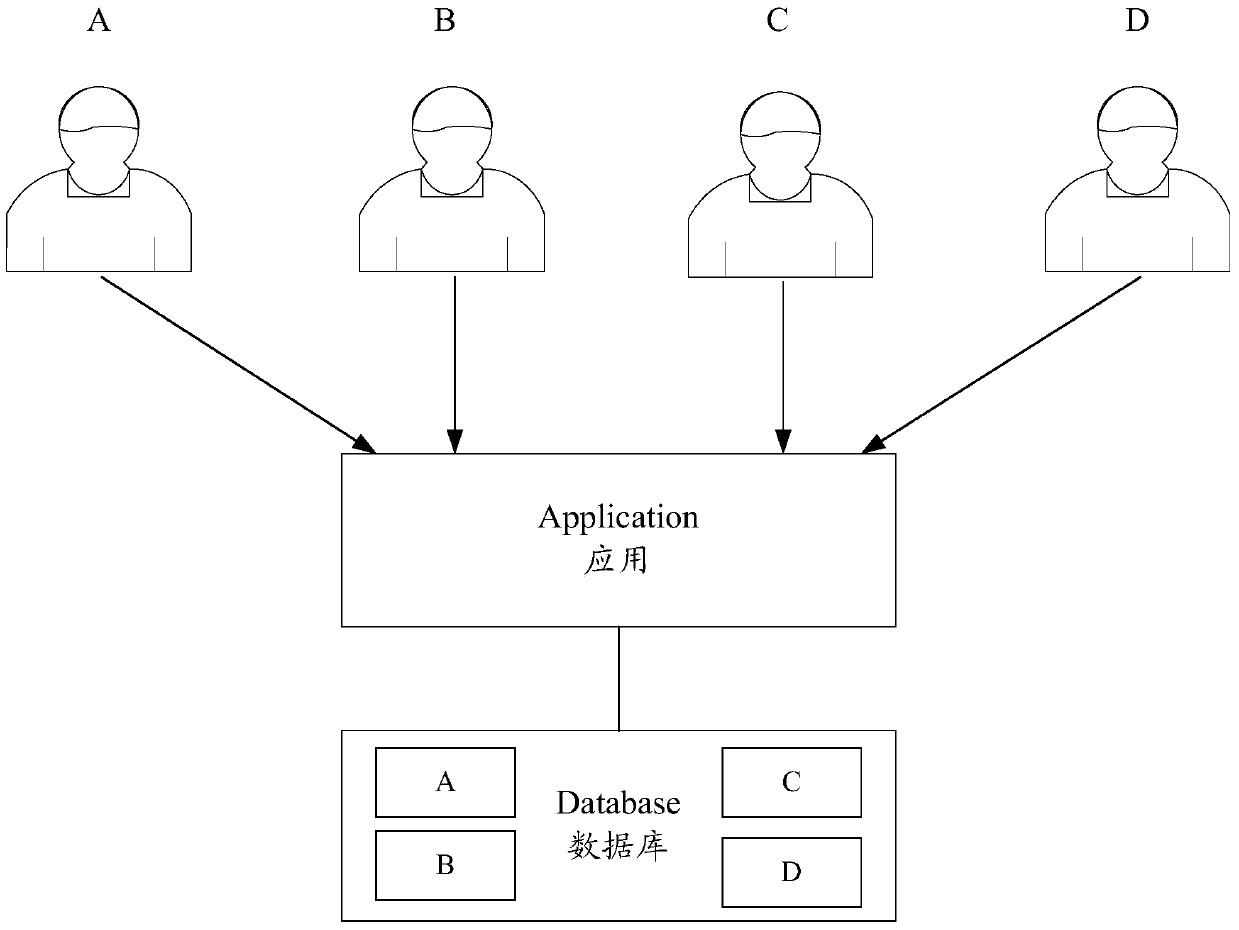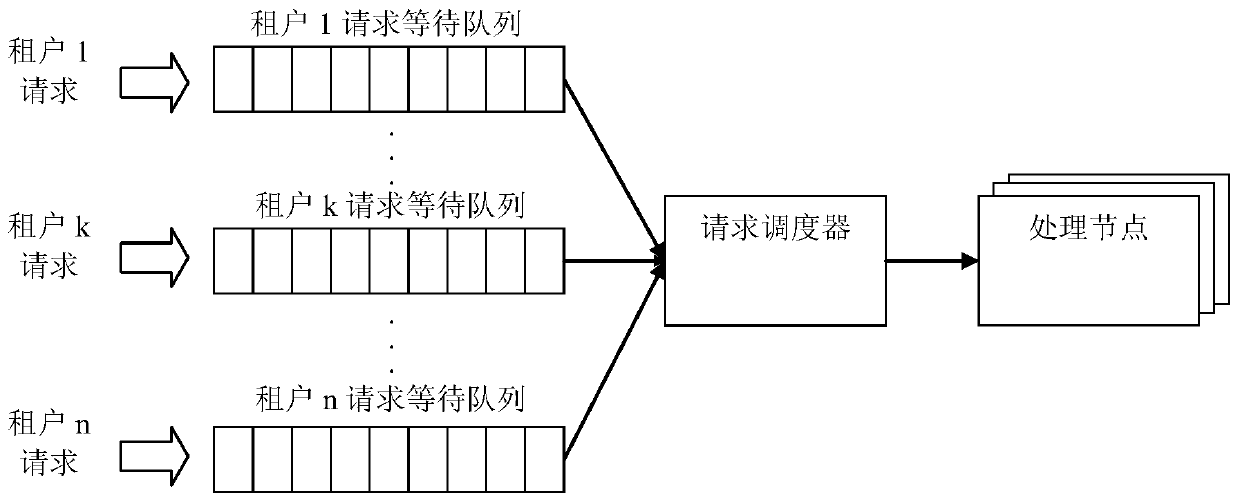A multi-tenant request processing method, device and equipment
A request processing and multi-tenant technology, applied in the computer field, can solve the problem of low efficiency of request scheduling
- Summary
- Abstract
- Description
- Claims
- Application Information
AI Technical Summary
Problems solved by technology
Method used
Image
Examples
Embodiment 1
[0172] refer to Figure 6 As shown, the buffer manager provided by the embodiment of the present invention for a specific processing process of a new request:
[0173] S601: Receive a new request.
[0174] S602: Analyze the new request, and determine the resource requirement of the new request, the tenant ID corresponding to the new request, and the resource requirement of the first request waiting queue corresponding to the tenant.
[0175] S603: Determine whether the new request is smaller than a preset threshold, if so, execute S604, otherwise, execute S606.
[0176] S604: Determine whether the sum of the resource needs of the first request waiting queue corresponding to the tenant is greater than or equal to the second threshold, if so, perform S605, otherwise, perform S606.
[0177] S605: Put the new request into the second request waiting queue corresponding to the tenant in the buffer, and continue to execute S607.
[0178] S606: Put the new request into the first re...
Embodiment 2
[0202] Embodiment 2 is the processing procedure of the request scheduler for the request for bundling using the first bundling identifier.
[0203] Wherein, the first bundle identifier is used to indicate that the request added with the first bundle identifier and the next request adjacent to the request added with the first bundle identifier belong to the same request group.
[0204] Table 2
[0205] parameter name set value second threshold 5 seconds preset threshold 5 milliseconds binding threshold 5 milliseconds first threshold 3 seconds
[0206] Refer to Table 2 for parameter values of various thresholds or thresholds. Suppose the buffer manager receives a request R t , parsing the request R t , determine that the tenant ID corresponding to the request is "A", and the request type is "GET". According to Table 3, the resource requirement of the request type "GET" is 1 millisecond, which is less than the preset threshold of 5...
Embodiment 3
[0220] Embodiment 3 is a processing procedure of the request scheduler for binding requests using the second binding identifier.
[0221] Wherein, the second bundle identifier is used to indicate that the request added with the second bundle identifier and the previous request adjacent to the request added with the second bundle identifier belong to the same request group.
[0222] The parameters in Table 2 are still used here. refer to Figure 10 As shown, the buffer manager will R t After being put into the second request waiting queue of tenant A in the buffer, it is determined that the second request waiting queue also includes: {R t-1 , R t-2 , R t-3 , R t-4}.
[0223] The buffer manager further determines that the second request is waiting in the queue except R t The latest request to arrive outside R t-1 , and to determine R t-1 The request group you are in is the request group to be added {R t-1 , R t-2}. Specifically, the buffer manager determines that R ...
PUM
 Login to View More
Login to View More Abstract
Description
Claims
Application Information
 Login to View More
Login to View More - R&D
- Intellectual Property
- Life Sciences
- Materials
- Tech Scout
- Unparalleled Data Quality
- Higher Quality Content
- 60% Fewer Hallucinations
Browse by: Latest US Patents, China's latest patents, Technical Efficacy Thesaurus, Application Domain, Technology Topic, Popular Technical Reports.
© 2025 PatSnap. All rights reserved.Legal|Privacy policy|Modern Slavery Act Transparency Statement|Sitemap|About US| Contact US: help@patsnap.com



